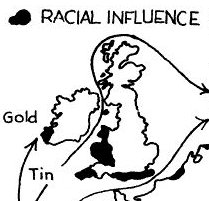BRITONS
Considered ideals of Northern European, or "Nordish," racial types, the populations of the British Isles, especially in the Celtic fringes, in fact have racial elements that distinguish them from their more Nordic Scandinavian neighbors, and link them to Southern Europe and the Mediterranean Basin.
Anthropology
"Hair colour is only one indication among many that a Mediterranid element has persisted in Great Britain since Neolithic times. That this persistence has been particularly obvious in Wales was emphasized more than half a century ago by Fleure and James in a very long and detailed paper on the physical characters of the people of that country. One need not suppose that any Welshman is descended from Mediterranid ancestors exclusively. It is evident, however, that genes of that subrace are more frequent in Wales than in most parts of Great Britain, and random (or more or less random) assortment of those genes will more often bring them together in a single individual, to produce a close approximation to a Mediterranid, in Wales than elsewhere."
"Among individual Welshmen it is possible to pick out individuals of a smaller Mediterranean type, similar to that of Spain and Portugal, and suggesting a survival from the Neolithic peoples of Windmill Hill cultural affiliation who entered southern Britain from the continent. This type is also easily isolated in the Midland factory districts, and among the Glasgow population. ... If we grant the small Mediterranean type a mean stature of 163 cm., a head length of 193 mm., and the lower facial and higher nasal indices, it assumes a metrical character which can easily be duplicated in the countries in which this type is more numerous and more easily identified, for example, Arabia and North Africa.
"Cornwall, which is the darkest county in England and an ancient Keltic linguistic stronghold, contains, like Wales, strong vestiges of a pre-Keltic population.... A large-bodied, muscular type, with a head which is frequently brachycephalic, is common here, and must be attributed to the Bronze Age invasions.... Besides having medium or tall stature, and a tendency to brachycephaly, they are said to be heavy-bodied, lateral in build, thick-necked, with features of a somewhat Armenoid cast, dark, curly hair, thick eyebrows, and eyes which are frequently brown. This type...may...be associated with the strong local belief that the Cornish are descended from Phoenicians.
"The majority of the brunet dolichocephals, however, belong rather to the Long Barrow race of Megalithic introduction from the eastern Mediterranean shorelands."
"The race is known simply as the Armenoid, the litoroid form of which is nothing but the product of a mixture with principally the Mediterranean race."Between 2000 and 1200 BC successive waves of these intelligent, determined Armenoid tribes spread along the shores of the Mediterranean, seeking and trading in metals and mingling with other races in the process. Through the Straits of Gibraltar a number of them continued to southeastern Spain with its wealth of copper, tin, silver, lead, and other metals. Here a secondary center arose from which the quest continued northwards to southern Ireland, where gold used to abound, and possibly to Cornwall with its tin resources...and through the straits of Dover to the amber beds of the western shores of Friesland and Jutland.
"At some of the more important points for mining or maritime trade colonies were probably established, and it is the inhabitants of many of these whose physical characteristics have survived up to the present day in spite of racial mixture and changes in language, religion, and culture."
Genetics
"The Welsh and Irish Celts have been found to be the genetic blood-brothers of Basques, scientists have revealed. ... [Professor David Goldstein of University College London] and his colleagues looked at Y-chromosomes, passed from father to son, of Celtic and Norwegian populations. They found them to be quite different. ... To try to work out where the Celtic population originally came from, the team from UCL, the University of Oxford and the University of California at Davis also looked at Basques. 'On the Y-chromosome the Celtic populations turn out to be statistically indistinguishable from the Basques,' Professor Goldstein said."
(BBC News, Apr. 2001)
(Donnelly, Sept. 2004)
* * *"Celtic nations such as Scotland and Ireland have more in common with the Portuguese and Spanish than with the Celts of central Europe, according to a new academic report. ... Historians believed the Celts, originally Indo-European, invaded the Atlantic islands in a massive migration 2500 years ago. But using DNA samples from people living in Celtic nations and other parts of Europe, geneticists at the university have drawn new parallels. Dr Bradley said it was possible migrants moved from the Iberian peninsula to Ireland as far back as 6000 years ago up until 3000 years ago."
* * *38.9% of Y-chromosome lineages in the North Welsh town of Abergele were found to belong to North African-specific haplogroup 21. This frequency may have been somewhat inflated by genetic drift and sampling error, but it nevertheless shows clearly the presence of a non-European Mediterranean element in the aboriginal populations of Britain. The study in question also found North Wales to have been much less affected by Anglo-Saxon and Celtic invasions than surrounding areas, which would make the people there representative of Ancient Britons as a whole.
* * *
"Today, just under 17 per cent of native Europeans that we have sampled are in the clan of [Middle-Eastern] Jasmine (mtDNA J). Unlike the other six clans, the descendants of Jasmine are not found evenly distributed throughout Europe. One distinctive branch follows the Mediterranean coast to Spain and Portugal, whence it has found its way to the west of Britain where it is particularly common in Cornwall, Wales and the west of Scotland."
Linguistics
"An interesting feature of Celtic languages is that in several characteristics they resemble some non-Indo-European languages. These characteristics include the absence of a present participle and the use instead of a verbal noun (found also in Egyptian and Berber), the frequent expression of agency by means of an impersonal passive construction instead of by a verbal subject in the nominative case (as in Egyptian, Berber, Basque, and some Caucasian and Eskimo languages), and the positioning of the verb at the beginning of a sentence (typical of Egyptian and Berber)."* * *
"JONES, BRYNMOR: Findings of Brynmor Jones on origin of populations of Great Britain and Ireland. Approaching the subject from the linguistic side, Rhys and Brynmor Jones find that the African origin—at least proximately—of the primitive population of Great Britain and Ireland is strongly suggested. It is here shown that the Celtic languages preserve in their syntax the Hamitic, and especially the Egyptian type. From The Welsh People pp. 616-664, where the subject is fully discussed, in an appendix by Professor J. Morris-Jones: 'The pre-Aryan idioms which still live in Welsh and Irish were derived from a language allied to Egyptian and the Berber tongues'."
* * *
Some Cambro-Britannic Hebraisms:
| Welsh |
Hebrew |
| Ochoren ballodddi hoc-dena Yni all sy dda Angheni a gowan Ysgoefon a gwirion Be heulo leuferfo Nesa awyr peneu chwi |
Acharei belothi
hedenah Ani El Saddai Angini eu gouan Isgoahvon u giwaeon Be hilo leavorvo Nesah auor panei cha |
Southern Racial Types
 Atlanto-Mediterranean (Ireland) |
|
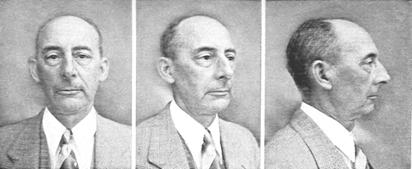 Mediterranean (England) |
|
 Mediterranean (Scotland) |
|
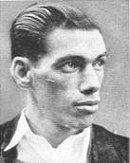 UP-Mediterranean (Ireland) |
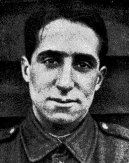 Armenoid (England) |
 Dinaric (England) |
|
* * *
Some British celebrities with Southern phenotypes:
 English |  Welsh |  Irish |  Scottish |
 Welsh |
 English |
 Welsh |
 Irish |
 English |
 Scottish |
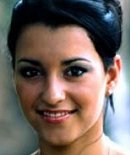 Welsh |
 English |
Related Topics
White Americans: Black and Indian admixture in Americans of British descent.
Tat-C: Asian admixture in other Northern European groups.
